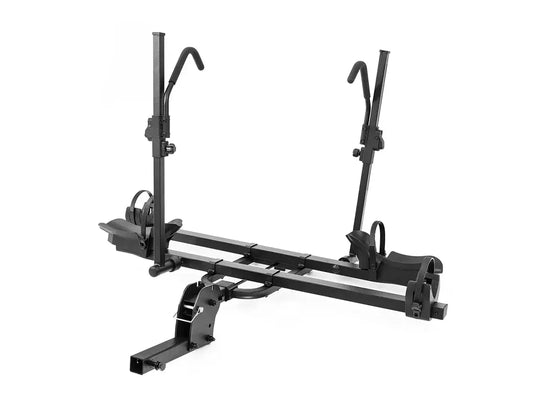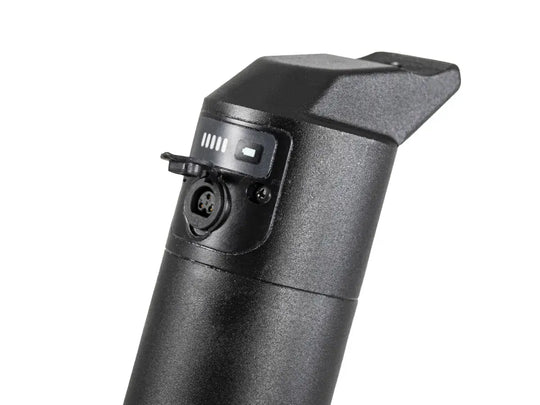
Top Tips For Electric Bike Battery Health
Taking care of our health is crucial for living a happy, active life. You need to eat right, exercise, and get enough rest to keep in good shape. The same principles apply when it comes to the things you rely on every day, like our electric bikes. Just as you maintain your body to stay fit, you need to look after your e-bike batteries to keep them running smoothly and safely.
E-bike batteries are central to the longevity and performance of e-bikes, and proper care can make a significant difference in their performance and lifespan. When you understand how these batteries work and learn the best practices for charging, storing, and using them, you can ensure that they remain efficient and safe. This guide will walk you through everything you need to know about electric bike battery maintenance, from extending its life to preventing potential hazards like battery fires.

Understanding Electric Bike Batteries
Lithium-ion is the dominant battery type due to its lightweight design and long lifespan. There are a few older e-bikes that use lead-acid batteries, but these are much heavier and have a shorter range. These lithium-ion batteries are similar to the ones you find in laptops and smartphones but beefier to handle the demands of an electric motor. However, there are variations within this category, including lithium polymer (LiPo) and lithium iron phosphate (LiFePO4) batteries, each with its own set of characteristics. Lithium-ion batteries have many advantages, including:
- High Energy Density: They pack a lot of power into a small and lightweight package. This translates to a more extended range for your e-bike and makes it perfect for portable electronics.
- Long Lifespan: Compared to other rechargeable batteries, lithium-ion batteries have a long lifespan, typically lasting several years in e-bikes.
- Fast Charging: They can be recharged in a few hours, which is much quicker than some other battery types.
- Slow Self-Discharge: Unlike some batteries that lose charge when not in use, lithium-ion batteries have a prolonged self-discharge rate.
- No Memory Effect: You don't need to completely discharge a lithium-ion battery before recharging, unlike some older battery types.
- Wide Operating Temperature Range: They can function relatively well in a broader range of temperatures compared to some other batteries.
Battery Used in the Leoguar Flippo Folding Ebike
The Leoguar Flippo has a 48V lithium-ion innovative seatpost battery for unparalleled stability, sleek aesthetics, and enhanced portability. This battery offers a great balance of power output and durability, ensuring dependable energy for urban commuter riding. With a capacity of 720 Wh (Watt-hours) and a rapid 3-3.3 hour recharge time, it delivers ample energy storage, allowing for extended rides on a single charge, making it perfect for long-distance commuting or leisurely rides.

Tips for Extending Electric Bike Battery Life
Replacing an e-bike battery can be expensive. When you follow proper care practices, you can extend the life of your battery, saving you money in the long run. Also, a well-maintained battery delivers consistent and reliable power. Your e-bike battery is a significant investment. Taking care of it ensures you get the most value out of your e-bike. Here are some simple tips you can follow to extend the lifespan of your electric bike.
Proper Charging Practices
One of the most effective ways to extend the life of your adult commuter bike battery is through proper charging practices. Ensuring that your battery is charged correctly can significantly impact its longevity and performance.
Should I Charge My Electric Bike After Each Ride? Actually, it's crucial to charge your e-bike battery to the recommended voltage levels. Overcharging can lead to overheating and reduce the battery's lifespan. For most 48V batteries, charging to around 54.6V is optimal. Using an intelligent charger can help regulate the voltage and prevent overcharging.
Leaving your battery plugged in after it has reached full charge can degrade its capacity over time. It's advisable to unplug the charger once the battery is fully charged. Modern chargers often come with an auto-off feature to help with this, but if yours doesn’t, setting a timer can be a helpful alternative.
Adequate Storage
Beyond proper charging, you need adequate storage for your e-bike battery when not in use, which is equally essential for maintaining its health. Store your e-bike battery in a cool, dry place away from direct sunlight. Extreme temperatures can adversely affect battery chemistry, leading to reduced capacity and lifespan. Aim for a storage temperature between 10°C and 20°C (50°F and 68°F). Humidity can also impact battery health. High-humidity environments can cause corrosion and other damage to the battery's internal components. If you live in a humid area, consider using a dehumidifier in your storage space.
Techniques for Battery Efficiency
Most e-bikes come with multiple power modes, such as eco, regular, and high. Using these modes efficiently can help conserve battery life. Use eco mode for flat terrains and when you don’t require maximum power. This mode consumes less energy and extends the battery range for each charge. Reserve higher power modes for challenging terrains or when you need extra assistance. This approach ensures that you are not draining the battery unnecessarily during regular rides.
Regular maintenance of your e-bike and its battery can prevent issues and prolong battery life. Perform regular checks on your battery’s connectors and terminals. Ensure they are clean and free from corrosion. Using a soft cloth and isopropyl alcohol can help keep them in good condition.

Avoid E-Bike Battery Fires
Battery fires, although rare, are a serious risk that can be mitigated with proper precautions. Always use the charger provided by or recommended by the e-bike manufacturer. Third-party chargers may have different safety features and could lead to overcharging or overheating, increasing the risk of fires.
Charge your e-bike battery in a safe and well-ventilated area. Avoid charging in confined spaces where heat can build up. Ideally, charge the battery on a non-flammable surface away from combustible materials. When storing your e-bike and its battery, please keep them in a secure and dry location. Avoid places prone to temperature extremes or where they could be easily damaged.
Regularly inspecting your battery for signs of damage or wear can prevent potential hazards. Look out for any swelling, leaks, or unusual smells, and if you notice any of these, discontinue use and consult the manufacturer or a professional.
Conclusion
Healthy batteries mean longer distances on a single charge. Proper care also saves you money in the long run by preventing frequent, expensive battery replacements. But it's not just about finances. Well-maintained batteries deliver consistent, reliable power. Taking care of your battery is also about protecting your investment. By following these tips, you're safeguarding the value of your e-bike. Extending battery life is good for the environment. E-bikes are already eco-friendly, but minimizing battery replacements reduces waste for a smaller environmental footprint.
In short, maintaining your e-bike battery ensures longevity, performance, and safety. By following these steps, you'll not only save money but also experience a more reliable and enjoyable ride.









































Leave a comment